The overnight battle on Vimy Ridge that gave the Montreal Crater its name
CBC sets the record straight on the backstory to one of the largest craters on the Western Front
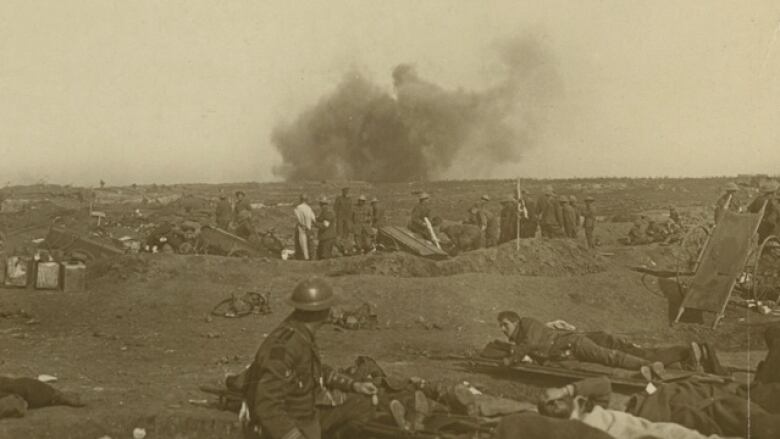
In the wake of the Canadian Corps' victory at Vimy Ridge, journalists, artists, and later tourists, flocked to the battlefield in northern France.
Among the most popular sites for visitors was an enormous crater, a powerful symbol of humankind's capacity for destruction.
The so-called Montreal Crater quickly enteredVimylore and is the subject of a watercolour by the great Canadian painter DavidMilne, who noted the giant hole was "deep enough to hold a house or even a church."
According to both Veterans Affairs Canada and Pierre Berton's 1986 book Vimy, the crater was named in honour of Montreal's 13th Battalion, Royal Highlanders of Canada.
But after reviewing several historical documents, CBC News is now able to tell the full story of the famous crater on Vimy Ridge.
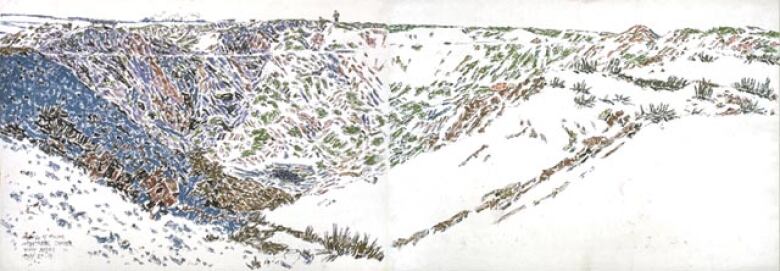
The battle underground
In the months leading up the battle, Canadian and German soldiers were locked in a stalemate on the ridge, dug into trenches sometimes just metres apart.
As both sides sought a way to break the stalemate, they engaged in furious tunneling activity in the chalk underneath the trenches.
The strategy was to dig under the opposing lines, blow the tunnels with explosives, and consolidate the new crater's lip before the enemy recovered from the shock.
The mines were an "immense assistance to the attackers as they shatter the enemy morale, create great confusion, and destroy all defences in the area affected," Maj. Donald McRae of the Royal Montreal Regiment (RMR) wrote in a manual for American soldiers in 1918.

McRae's insights came from personal experience at the blowing of the Montreal Crater on Nov. 27, 1916.
In the fall of 1916, German tunnelers were discovered digging towards a section of the Canadian line at Vimy.
A counter-tunneling operation was undertaken by British engineers with the aim of detonating a mine under the German galleries before they could explode theirs under the Canadians.
The counter-tunnel was packed with nearly 24 tonnes of explosives and detonated on Nov. 27 at precisely 9:50 p.m.
A diary kept by the 14th battalion of the RMR, which was positioned in front of the new crater and tasked with its consolidation, estimated its size at 67-metres wide at its widest point and 18-metres deep.
Sounds of being smothered to death
Moments after the mine was detonated with a massive, earth-shuddering thud, distress flares shot up from the crumpled German lines, a sign for their artillery to respond. The German guns answered with an intense, half-hour barrage of the RMR's position.
Amid the shelling, four 30-man storming parties under the overall command of 14th Battalion Capt. A.T. Powell raced into the smouldering, exploding void with orders to consolidate the near lip "with the greatest possible speed."
As if the German shelling wasn't enough to contend with, a counter-barrage by Canadian and British guns fell short, causing "many casualties" among the 14th's storming parties, the battalion diary notes.
Leading one of those parties was Donald McRae.
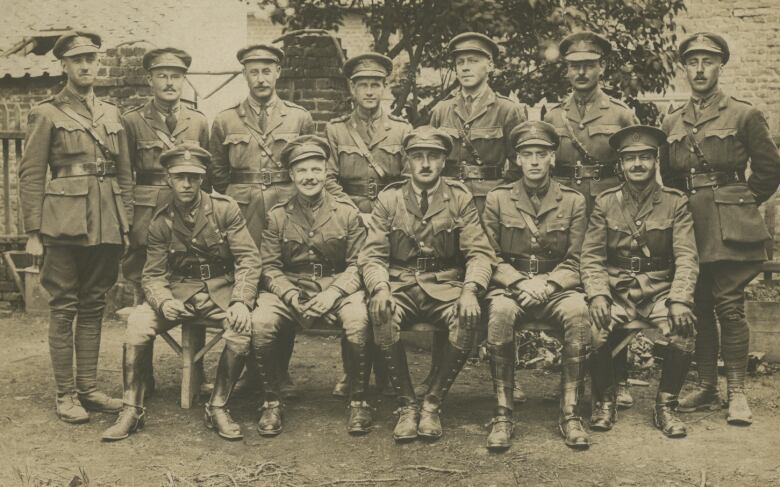
In a graphic account of the operation published in a U.S. newspaper in 1917, McRae describes a direct hit by a German trench mortar that killed an entire RMR machine-gun crew of seven men.
"Conditions were so bad it was impossible to remove their bodies that night or the next day," he wrote.
Somehow amid the thunder of the battle, McRae and others heard a tapping sound from inside the crater. They realized it was coming from Germans trying to dig out from an underground bunker collapsed by the explosion.
"It must have been full of Germans who were slowly smothering to death down there in the dark, forty feet underground," McRae wrote.
"It is a horrible form of death and it was pitiable to hear their hopelessly frantic efforts to dig out. I felt sorry for them, even if they were Germans, but there was nothing we could do."
Men from the 14th located the sound and tried to rescue the Germans, but shelling forced them to abandon their efforts.
The coming hours would see the 14th fight off three German counter-attacks against their new positions, which were finally deemed secure by 5 a.m.
A casualty tally in the battalion diary records the losses that night:
Enemy approximately 75, exclusive of casualties caused by actual explosion.
Our own 11 killed and 28 wounded total 39.
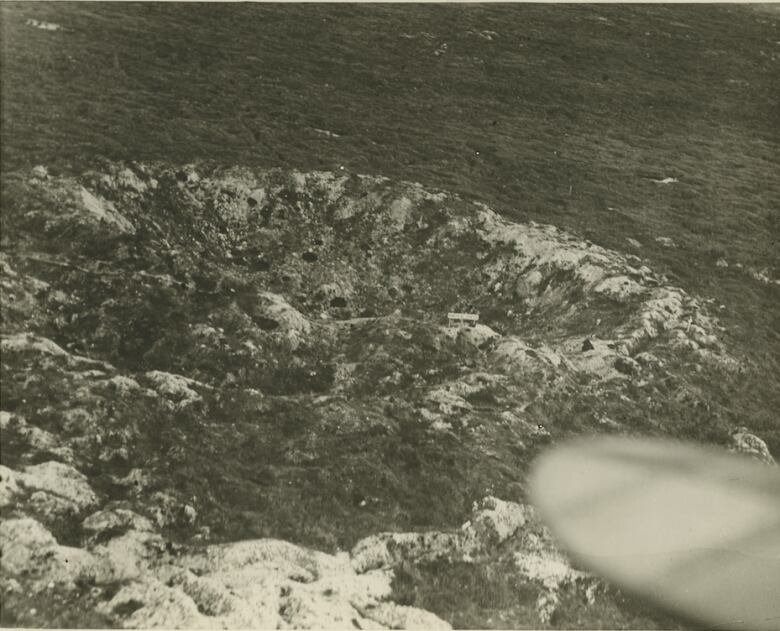
A legend is born
The first reference to the "Montreal Crater" occurs in the 14th Battalion's diary on Dec. 14, 1916. Further references are found at the end of the month in a section listing three men who were decorated for their actions on Nov. 27:
Lieut. Edwin Cowen awarded Military Cross for conspicuous gallantry at the blowing of the MONTREAL CRATER on Nov. 27th, 1916.
Pte. Magneison, J.A. and Pte. W. Allard awarded Military Medal for conspicuous gallantry at the blowing of the MONTREAL CRATER on Nov. 27, 1916.
From that time forward through the years and decades to come, the Montreal Crater took on a meaning much broader and deeper than its physical stature as one of the largest mine craters on the Western Front.
Milne's painting of the crater, for instance, is often lauded for capturing the nihilistic violence of the war. A 2014 essay in Canadian Art magazine described the painting as "quite literally, a picture of nothinga record of a monumental visual vacuum where once there had been land."
A fiction corrected
But despite the battalion war diaries kept by the RMR, and McRae's own accounts of its fiery creation, a myth has persisted that the Montreal Crater was named by the city's 13th Battalion, the Royal Highlanders of Canada.
In his account of the crater, Berton writes: "When the Royal Highlanders of Montreal seized it and drove off the Germans, the crater was named in their honour."
Soldiers from the 13th Battalion were indeed present when the crater was blown, but they were there as support for the 14th Battalion, Royal Montreal Regiment.
This is attested to in the 13th Battalion's war diary entry for Nov. 27, 1916.
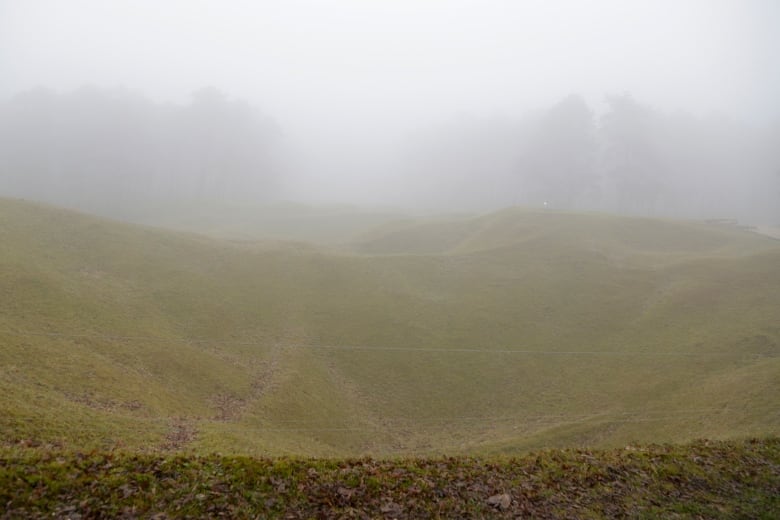
"Owing to the fact that a mine was to be exploded, No. 3 and 4 [Companies] had been left in the trenches to support the 14th Canadian Battalion in taking the crater and consolidating the new position."
The Canadian thing to do would be to say it was a joint effort by the 13th and 14th battalions.
But if one battalion is to be given the credit, it's the Royal Montreal Regiment.
A historic detail, perhaps, but to the men of the RMR who were killed or wounded in the Montreal Crater's cataclysmic christening, it's one deserving of a correction.












_(720p).jpg)


 OFFICIAL HD MUSIC VIDEO.jpg)
.jpg)



























































































